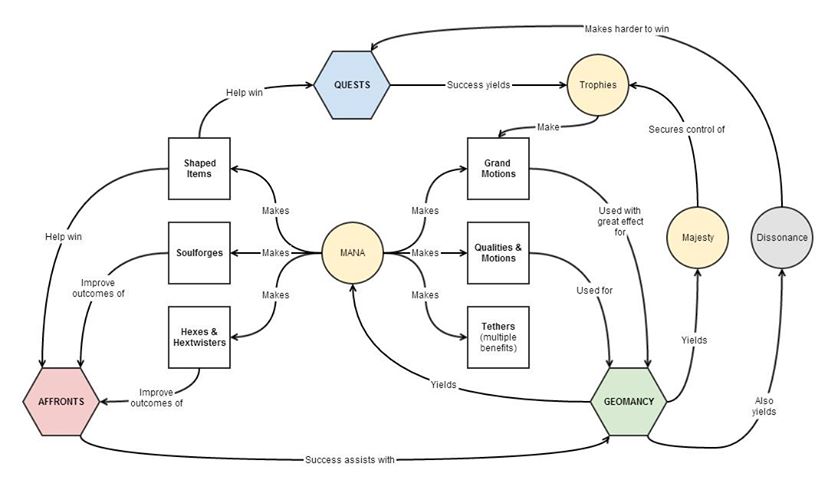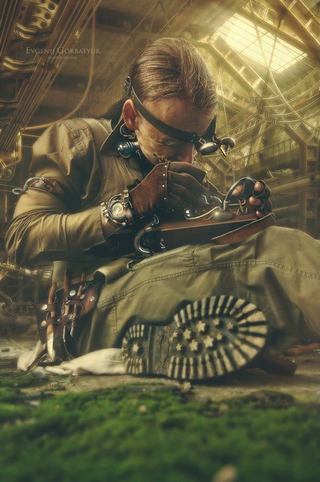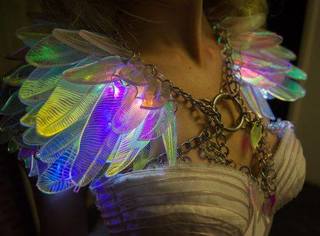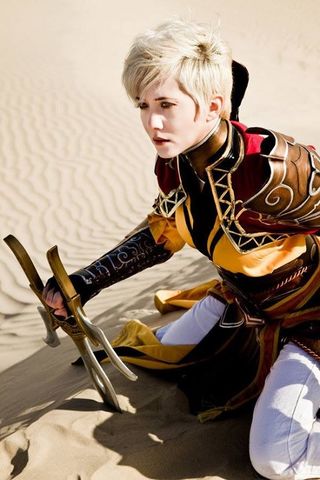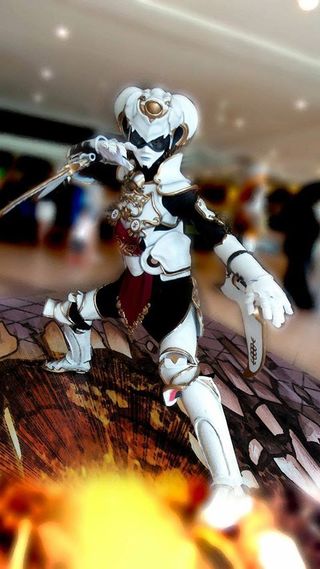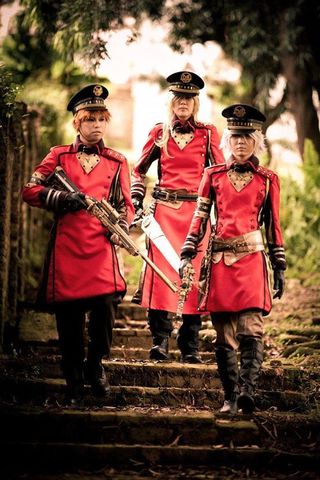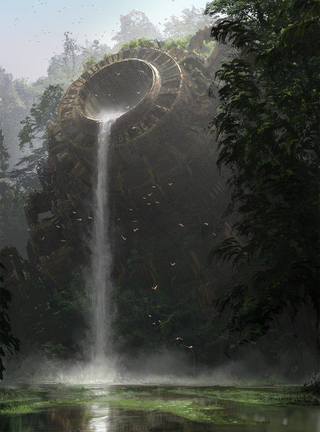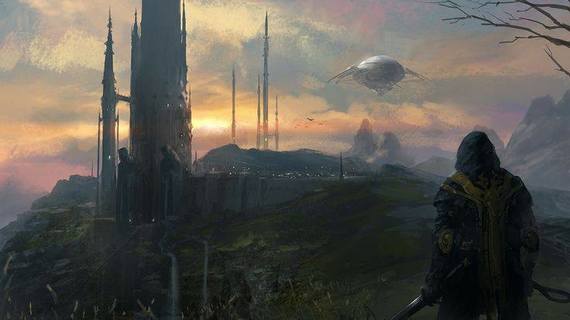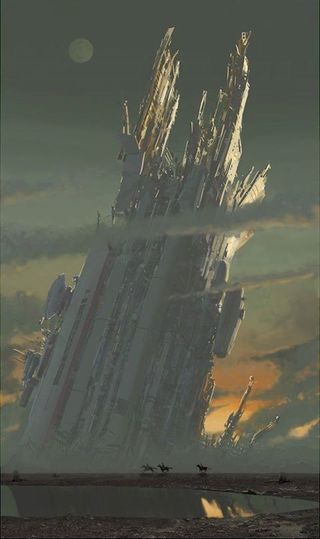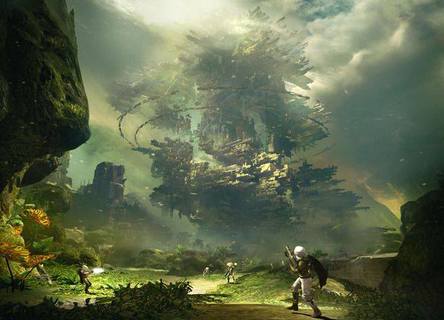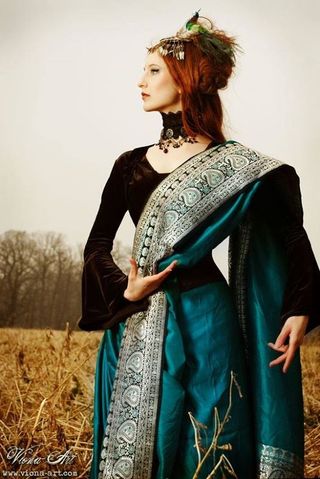Rules
The Game
ReGenesis will run in a fixed series of six events, starting in 2016 and running twice a year thereafter.
Our aim is to use a different site for each event, reflecting the changing nature of the geomantic nexus - so you may find yourself in a country home at one event, an abandoned steel mill at another, and so on. We are currently reviewing our options for the first site, but it will be no further south than London and no further north than York. Each event will run from 8pm on Friday evening to 2pm on Sunday afternoon.
Attendance for the first event will be limited to 60 characters, with approximately 20 crew. That limit is further split between the origin cultures - 12 apiece from the Penitents, People's Combine, Valtarian Kingdoms, Visions of Opportunity, and the Walkers. These will be assigned on a first-come, first-served basis after character generation goes live. Once play begins, the restriction on numbers by culture is removed.
There is an IC reason that ReGenesis has a fixed run of six events: when creating the Outworld and the geomantic engines, the Sublime Concord built in a failsafe. At the end of the sixth event, the geomantic engines will power down, and the shaper's gift will fade with them. You will be left mortal once again, to live the remainder of your lives in the world you have created.
Policies
Shaping
Motives
What defines a shaper's ability is the will and purpose behind it. When you create your character, there are seven Motives to choose from: Challenge, Devotion, Gratification, Influence, Knowledge, Loyalty, and Supremacy. You may choose two of the three Motives favoured by your culture, or one that is not.
Motives determine how you can augment your character's relationships into powerful Tethers - more on these next week. They also determine what you can shape: each of the seven Motives has a unique list of items that they can create with mana, the contents of which are universal knowledge. Once created, items can be freely traded or given to others.
Shaped Items
Characters do not learn new skills; they are already as powerful as gods. They can increase their capabilities through Tethers they forge with others (more on these later), and through Shaping items. This is a process of using mana to enrich a mundane item with divine-grade power. When you equip that item, you gain its abilities.
In the world of ReGenesis, magic and technology are one and the same - possibilities made real by the ingenuity and hard work of shapers. To this end, we use an open physrepping system. An item's description will tell you whether it is one-handed or two-handed, an outfit, or an accessory. It will also tell you whether it can be used to parry melee attacks, and thus needs to be LRP-safe. You can then pick a prop that matches these requirements, the effects it creates, and your own characterisation.
For example, you may have an item that reads:
One-Handed, 4 Red Mana:
- Stunt: You may call ‘YOU: HA!’
- Stunt, 1 Morale: You may call ‘YOU, FZAM!’
- Stunt, 3 Morale: You may call ‘YOU LOT, FZAM!’
This might take the form of a flame pistol in the People's Combine, a bone wand in the Valtarian Kingdoms, an acid-spitting symbiote in the Walkers, a neural jammer in Opportunity, or a chakra disruptor carried by a Penitent.
If you have more than one Motive, you also have access to a secret shaping list of advanced items. There are twenty-one of these, one for each potential combination of Motives - not all of which are attainable without the careful use of Tethers.
Combat
Morale
ReGenesis uses a single tracked number, Morale, in combat. Morale represents a combination of your physical health, fatigue, resolve, and the condition of your equipment. Each character has a maximum Morale they can attain, typically five, and is taken out of the fight if they reach zero.
You lose Morale by getting hit with attacks. You gain Morale from the support of your allies' abilities, and from some items - ones that unlock victory taunts, for example.
Have Morale to spare? Spend it on unleashing supermoves.
Calls
There are eight calls in ReGenesis: the basic damage call ('HA!'), four special damage calls ('FZAM!', 'POW!', 'SHANG!", and 'WUMF!'), and three special calls ('GET SOME!', '-UP!', and 'REVIVE!').
Shapers are not felled by casual violence; to hurt one, you need your full focus and conviction behind each blow. After each call you make, you must wait at least five seconds before making the next one.
Stunts
Ranged attacks, and many support abilities, need you to perform a Stunt first. This is a combination of movement and speech (or sound effects from your equipment) that lasts at least five seconds. You should design your own Stunts to fit your characterisation, and the ability in question. These will help you time your attacks, and look fantastic.
While changes of footing for the purposes of posing and wild gesticulation is allowed (and encouraged), you may not move from the spot you are standing while you are performing a Stunt. Moving from the spot (or being hit by a FZAM!, POW!, or WUMF! call's special effect) will cause the Stunt to fail, and it must be started again.
Affronts
At events, shapers inhabit the vast geomantic apparatus left behind by the Sublime Concord. They hold sway over reality, and as such cannot be hurt by one another except in an Affront.
Anyone can declare an Affront against anyone else, and they will be given a time when it will be resolved. At this time, the challenger and defender make their way to the duelling grounds, where each will be given the opportunity to call forward three team-mates (who must consent).
Once both sides have had their opportunity to speak their part before the assembled onlookers, battle is joined. The four-on-four duel continues until all members of one team are taken out of the fight.
The members of the winning team who are still standing can each place a Hex - a shaped curse - on a member of the losing team. The most vicious Hex is lethal, but all of them have cruel and debilitating effects.
Geomancy
Mana
Geomancy allows shapers can capture some of the world's primeval energy and crystallise it into mana. This mana is used to imbue mundane items with extraordinary power, or create potent geomantic tools that allow them to further sculpt the world. There are three types of mana, each represented by a different colour of token:
GREEN mana is the essence of wonder, spontaneity, and formlessness. It is used to create items that revivify or embolden.
BLUE mana is the essence of harmony, workmanship, and law. It is used to create items that protect or control.
RED mana is the essence of discontent, aggression, and change. It is used to create items that destroy or disrupt.
You will receive a regular stipend of eight mana at the beginning of each event; its type is determined by the Quality you chose to start with. You can expect to acquire somewhere between two and twenty more mana during the course of each event, depending on how successful you are at geomancy.
Realms and Regions
The protean landscape of the Outworld is divided into five broad areas, called realms. Your Territory begins in a realm determined by your original culture, although it is possible to move to another. A shaper's realm is the closest thing they have to a nationality in the Outworld: members of a realm go on Quests together, and take turns at geomancy together.
The protean landscape between Territories is vast, and concepts such as distance and direction are still mutable. Shapers can remedy this by creating defined links between one Territory and others in the same realm, forming a Region.
Forming a Region substantially increases the efficiency of generating mana from the Territories within it - however, it also creates a more tempting target for attack.
Motions and Channelling
Where a Quality represents a feature in the Outworld, a Motion represents an event. This could be a harvest, an invasion, a revolution - there are 12 types in total, all of which can be created at the shaping desk. Qualities determine what a Territory can do, but Motions make them do it.
For example: a Territory has Qualities on it that give it generation of 3 Green mana, 2 Red mana, and 1 Dissonance. A 'Harvest' Motion is used on it, which says "Generate Green mana and Dissonance for the owner." The Territory's owner receives 3 Green mana, and their realm gains 1 Dissonance. Red mana is not produced, because it is not part of the Motion's effect.
Qualities are placed on a single Territory, but Motions target an entire Region: if a Territory is not part of a Region, it is considered to be a Region of one.
When you take your turn at the geomantic tables, you may either place a Quality on a Territory or target a Region with a Motion - but not both.
Motions require the support of people to succeed: once everyone has taken their turn, each player may Channel their Territory in support of a single Motion on the board. If a Motion has enough Channel counters on it, it succeeds and the effect is applied. Either way, the Motion is removed from the board once used.
Typically, the number of Channel counters a Motion requires is equal to the number of Territories in the Region it targets.
Trophies and Grand Motions
If a realm succeeds at their Quest, they are given a Trophy. This is a special resource that can be combined with mana at the shaping desk to produce a Grand Motion. There are 21 different Grand Motions, one for each different advanced shaping list.
Grand Motions are used at the geomantic tables in the same way as Motions are, but have extraordinary and often far-reaching effects. They may be superweapons, sources of great riches, or powerful strategic tools. Every use of a Grand Motion has potential to significantly change the balance of power in the Outworld.
Territories and Petitioners
When a shaper enters the rift, their essence is threaded into the world by the geomantic engines. This creates their Territory, a pocket of stable reality adrift in the primordial fabric of the Outworld.
You may name and describe your Territory in whatever way is appropriate to your characterisation, and this will appear on the Geomantic Tables. Territories will always feature sentient human life, brought into being when the lands form.
As the flow of geomancy changes your Territory - for better and worse - these mortals will appear at events as Petitioners, there to meet their creators and praise, beg, inform, quiz, or harangue them.
Dissonance
The world bends to accommodate the will of shapers. When two of them come into opposition, it can be impossible to fulfil both of their ambitions. That twist in the world can become a shear - events become confused, memories clash, and places fracture. This effect is known as Dissonance, and is largely responsible for the present ruin of the Homeworld.
In the Outworld, you share a Dissonance pool with other members of your realm. Dissonance is generated by the process of trying to extract mana, but the efforts of your enemies (or your overzealous friends) can greatly increase its accrual.
Majesty
The Outworld recognises true splendour, which is counted in Majesty. Your Territory may have Qualities that allow it to generate Majesty, which is stored as tokens on its tablet. . At the end of each realm's geomantic cycle, Majesty is counted. The character who has accumulated the most Majesty is recognised by the Apparitions as its ruler. This provides them with several powers:
- If a realm succeeds at their Quest, their ruler receives the Trophy. - A ruler may forbid individual members of their realm to go on their Quest, or allow members of other realms to join them. - The ruler decides their realm's turn order in geomancy. - A ruler may choose the name for their realm. - At the end of each event, the rulers of all realms have an opportunity to vote to determine which of them receives an additional Trophy.
Each culture has a different understanding of what a ruler is, and what their responsibilities are. It is up to characters in play as to whether these traditions are retained, and whether or not they recognise the same ruler as the Apparitions.
Corruption
Some Qualities have the Corruption effect. If a Territory has any Qualities with the Corruption effect, it is considered Corrupted: it does not count toward the Channelling cost for hostile Motions that target its Region.
Most Qualities with Corruption also provide extra mana or Majesty, and it is necessary to have one to maximise your Territory's production. It is up to you and your allies to strike a balance between your income and the vulnerability of your lands.
